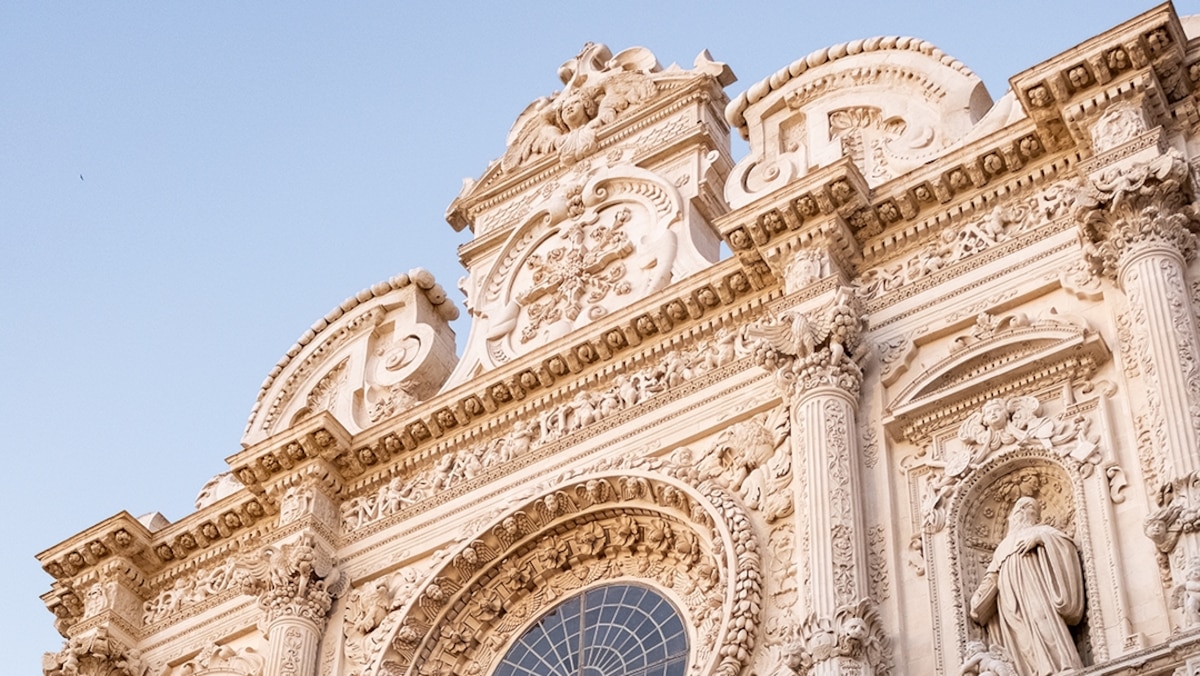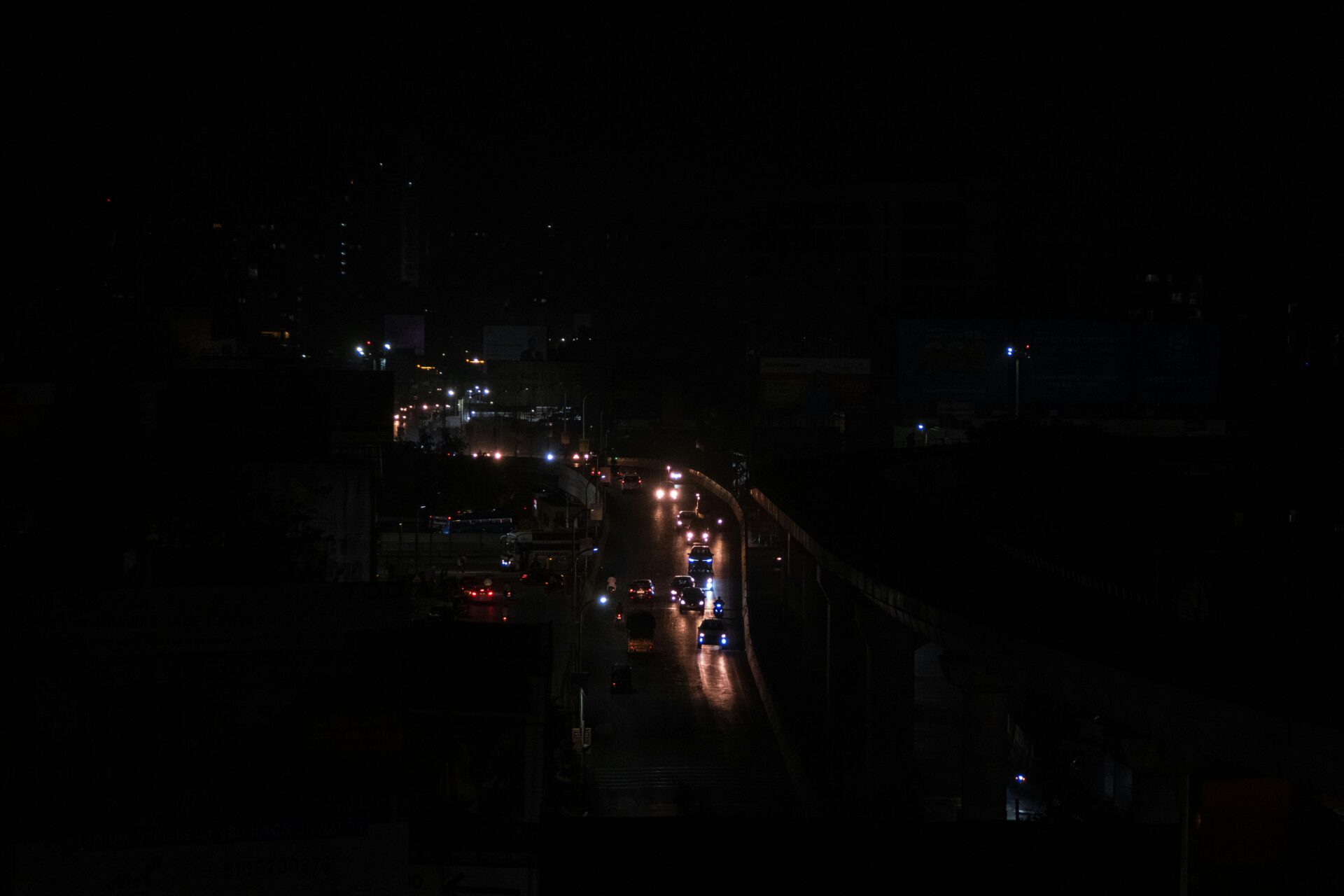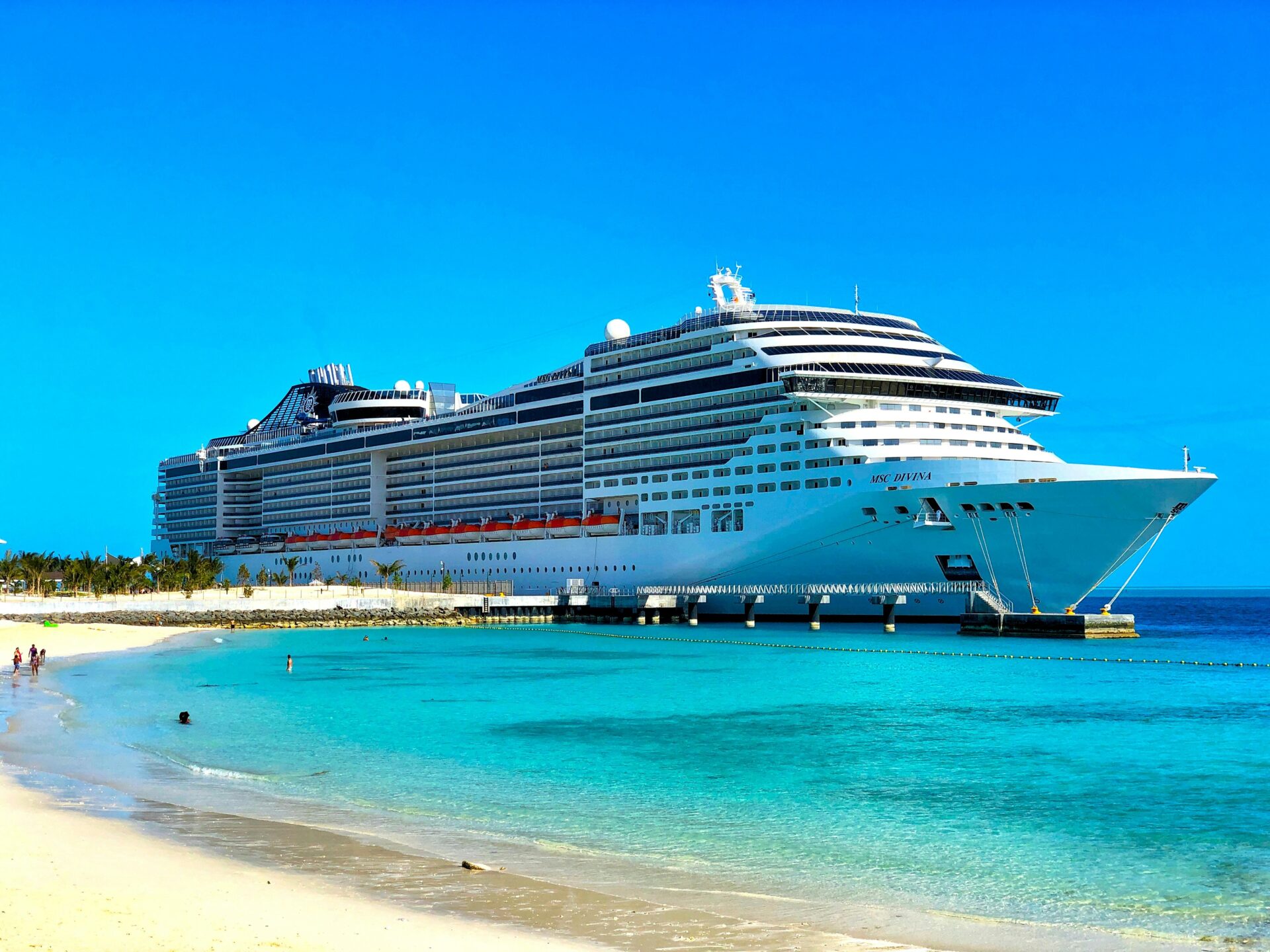The grand and honey-hued Basilica di Santa Croce is an architectural marvel that leaves many visitors, locals included, in awe. Built over 140 years and completed in 1689, the Basilica di Santa Croce stands as a symbol of Lecce, the largest urban centre of Salento. Known for its white-washed hamlets, sandy beaches, and the clear waters of the Ionian and Adriatic Seas, Salento is seated at the tip of the heel of Italy’s boot-like peninsula. But Lecce, in all its grandeur, is something even more unique earning it the nickname, the ‘Florence of the South’.
A tour through Lecce transports you back in time, unveiling tales of historical significance with every building you see. The story of Lecce’s Basilica is not just in its architectural grandeur but also the men carved into its exterior. These men kneel in a line from one side of the wall to the other, seemingly carrying the upper facade of this historical basilica with their bare hands. The building is so intricately and richly decorated that it appears to be in motion. Cherubs are seen swirling in a spiral, and garlands of pomegranate and acanthus leaves reaching towards the central rose window. This sight alone is enough to tell you that Lecce’s architectural wonder is something to behold.
The city’s magnificently carved architecture and the numerous contributions it boasts in the realms of culture and history have all contributed to its reputation as the ‘Florence of the South’. Drawn by Irish bishop George Berkeley in the 18th century, the nickname reflects Lecce’s grandeur, which can be seen in some 140 churches and several magnificent facades. In Berkeley’s own words, Lecce was a place that could hold its own against Rome or Venice and even resembled a small Florence.
Much like how the Tuscan capital exemplified the Renaissance, Lecce became a manifestation of the Baroque era. Originating in Rome in the 17th century, the Baroque art form spread southwards, taking on a local twist in Lecce. Treasured by its people for its ability to create marvels, despite being ’a poor material’, is the region’s soft limestone known as Lecce stone.
This malleable stone, soft as the interior of a bread roll, could be carved with a penknife and comes with several intriguing features. It’s a type of limestone extracted in quarries around Lecce, formed from the bed of an ancient sea and often contains shells and fossilized remnants. The stone is so characteristic of Lecce that it has become the defining feature of Lecce Baroque, with the city centre almost entirely tinted in the stone’s warm, off-white shade. The town’s inhabitants freely wander around, seemingly oblivious to the open-air museum on display above their heads.
It’s not just in the construction of grand structures the Lecce stone is used. Over the past 30 years, artisans have begun experimenting with stonemasonry. One such individual is Renzo Buttazzo, a sculptor who has traded religious icons for a more modern approach in his work with Lecce stone. Humbled by his traditional roots, Buttazzo believes that stonemasons from Lecce carry the duty to continue the legacy of excellence demonstrated by their forebearers – the same artisan ancestors who built grand structures like Santa Croce centuries ago.
Lecce is not just a city rich with history. It is also a place where legacies are still shaped and preserved today, where modern artisans experiment while valuing and honouring their traditional roots. Whether it’s Buttazzo’s sculptures, a simplification of the grand Baroque representations, or the grandiose and majestic Basilica di Santa Croce, Lecce continues in its stride to unite the ancient and the contemporary, carrying on its legacy as the ‘Florence of the South’. This enduring spirit, defined by a mix of history, innovation, and love for beauty, is the essence of the story of Lecce.




